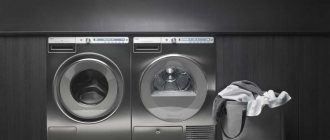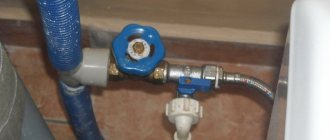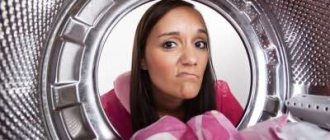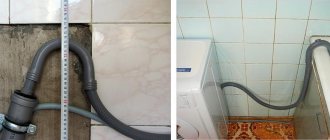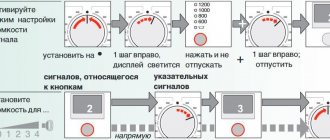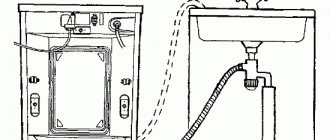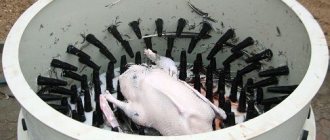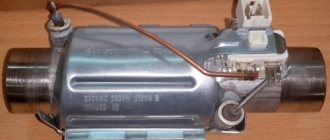One of the most important parts in a washing machine is the tank. A faulty tank can cause damage to other parts of the machine. The quality and durability of the tank depend on the material from which it is made. Before purchasing, it is advisable to familiarize yourself with what material served as the basis for creating the tank. To do this, just move the rubber of the hatch a little. If you need washing machine repair in Saratov or Engels, call our company. We will produce it as quickly and efficiently as possible.
Polymer tanks
Well-known brands of washing machines use their own designs to create tanks. Basically, these are polymers with various additives. Each washing machine manufacturer carries out its own developments and names its polymer substance. Tanks made of composite materials can last about 30 years , they are reliable and durable. The composition of polymer tanks ensures their resistance to chemicals. It is necessary to take into account that due to the lower price of a polymer tank, you can purchase a washing machine in an affordable price category.
Practical studies have shown that in terms of their physical properties, polymer tanks are significantly superior to metal tanks. Basically, these are hard materials that are resistant to high temperatures and alkalis and do not absorb moisture.
The weak point of all polymers is random objects that can get into the tank - buttons, nails and bolts. To extend the life of your washing machine, it is advisable to carefully check your clothing pockets before loading them. Polymer tanks are easier to repair.
Enameled coating
Not so long ago, manufacturers produced cars with enamel tanks. But such models did not work for long. If even a tiny crack appeared on the enamel coating, the metal underneath was subject to rust.
This option - enameled metal - has a number of features, positive and negative. Their details are given below:
Positive sides
- Reliable operation when placing any laundry.
- The enamel produces a protective layer. And it protects the metal from the effects of corrosion.
- What material can containers be made of that can be confidently called strong? This is a twofold question. During transportation, the likelihood of damage is very low. And with significant temperature changes they do not split.
Negative
- An impressive mass.
- The container is not shockproof.
- With very long use, chips form on the container. These are the consequences of impacts from foreign objects. In damaged areas, the enamel crumbles. The defensive layer disappears. Without it, the metal becomes rusty and destroyed. After a certain period, leaks are observed. And the owners must either replace such a tank or purchase new equipment.
It should be noted that containers from this variant are no longer produced. There have been too many accidents when using them. And to create tanks they began to use plastic or a stainless steel base. Which tank is the best of these options is a controversial question.
Polyplex tanks
If the tank material is polyplex , then you can count on the machine’s resistance to high temperatures, corrosion and chemicals. Like any other composite materials, polyplex absorbs vibration well, thereby increasing the soundproofing properties of the machine.
The high thermal conductivity of the material contributes to more economical energy consumption. Also, polyplex tanks are among the cheapest.
The disadvantages of polyplex include fragility, especially at low temperatures. See also: What to do if the washing machine does not spin the drum.
Silent models of washing machines
In order to choose the right washing unit, you should know some subtleties. For example, the noise made by the machine during the washing period and when spinning the laundry differs from one another. The noisiest process is spinning. Therefore, when purchasing a device, it is important to take into account the indicator characterizing the noise level of this action in decibels.
Today, washing machines are produced that are characterized by the most silent operation. Among them: Gorenje W 66Z03N/S, AEG L 87695 WD, Electrolux EWW 1697 MDW, LG F10B8ND1, Whirlpool AWE 9630 and others.
Subscribe to our Telegram Viber channels
Carborane tanks
Many modern manufacturers of washing machines prefer carborane. This composite material is able to combine the advantages of both polymers and stainless steel. The carboran tank material is environmentally friendly, not susceptible to corrosion, and has high heat and sound insulation properties. Carborane is resistant to chemical and mechanical stress.
Carborane is used not only to create tanks, but also for other parts of the washing machine. Compared to polyplex, carborane is a more durable material, characterized by high ductility, strength and reliability. In general, this polymer is in no way inferior to stainless steel tanks.
Manufacturing materials
Strong and durable material is the key to successful operation of the washing unit, because the work is constantly subject to serious loads and temperature changes. Foreign objects may damage or block system operation.
Manufacturers use the following types of material to make the drum container:
- stainless steel;
- plastic;
- polymer;
- metal.
Stainless steel
Steel copes better than others with constant interaction with water, and is also particularly durable. It is very often used as a material for the washing machine tank. The main advantages are:
- durability;
- reliability;
- strength;
- The tank, made of stainless steel, will serve you for many years.
Despite this popularity, there are also disadvantages:
- High noise level. This is caused by the inability to dampen vibration and noise. Many housewives are unhappy with this phenomenon.
- High price. A product made of high-quality steel with conscientiously welded seams cannot have a low price.
- Devices with metal drum containers consume more electricity, since metal has low thermal insulation.
Plastic
The second place in demand is occupied by products made of plastic and other polymers.
The advantages are:
- Low cost.
- They don't make noise. If you believe the advertising, things will be washed absolutely silently. They do an excellent job of absorbing noise and vibration.
- Less energy consumption due to good thermal insulation. Heating water requires less energy.
- Not susceptible to corrosion or chemicals.
- Light weight of the product and the device itself. When repairing, it is much easier to remove than a metal one.
- Relative strength. When compared with stainless steel products, plastic elements will lose out due to their fragility. However, constant developments are underway in this direction, and the composition of polymers for the manufacture of parts is improving, becoming stronger and more reliable. The service life can reach 30 years, which is significantly lower than that of stainless steel. However, this is enough, since the service life of the washing machine itself will come to an end after this time.
The only but significant disadvantage is:
- Fragility. Damage may occur during transportation or if foreign objects get between the drum and its reservoir. Breakdowns can be very serious, making it impossible to use the equipment.
Each washing machine manufacturer uses its own polymer composition technology.
Plastic differs in characteristics, has low cost and high fragility. Due to additional impurities, the strength of the composition increases, and in some cases, products made from polymers are not too inferior in reliability to stainless steel elements and perfectly withstand the aggressive effects of chemical detergents.
Composites
In order to offer household appliances at affordable prices, manufacturers began to use composite plastic materials for the manufacture of tanks: polynox, carbotech, fibran and others. The machine operates with such a tank with a low noise level. The low thermal conductivity of composites promotes rapid heating of water and heat retention, which is more economical in terms of energy costs. But compared to stainless steel, many composite polymer materials are fragile and require careful transportation and operation.
- Polynox is a composite of polypropylene and calcium carbide. A reservoir made of such plastic is light and durable, retains heat for a long time, absorbs vibrations, and is resistant to corrosion. The tank, subject to the manufacturer's recommendations, can last up to 30 years.
- Carbotech is a composite that is not inferior to stainless steel in terms of resistance to mechanical damage and has all the advantages inherent in plastic.
- Silitek, Karbotek, Carferon are similar materials with excellent performance characteristics.
Plastic tanks
Plastic tanks are considered one of the most budget-friendly. A washing machine whose tank material is plastic is much more economical than other models. Due to high thermal conductivity, it is possible to save energy. Another advantage of such machines is that they are much quieter than machines with steel or polymer tanks.
The disadvantages of plastic tanks include their unreliability and short service life. Under the right conditions of using a washing machine, a plastic tank can last up to ten years. The main disadvantage of such tanks is their high fragility. The tank is easily damaged even during transportation.
Particular attention should be paid to gray plastic. Experience shows that this material is capable of deformation and drying out under the influence of high temperatures.
Purpose of the tank and its types
Structurally, the tank is a container for the drum, where the user of the machine puts things for washing . Through the inlet pipe into the container from the water pipe, the automatic machine draws water for washing. In the tank, the water is heated to the desired temperature. The amount of liquid collected depends on the model and the set washing program.
Using a special mechanism, washing powder and conditioner are supplied into the container. The soap solution enters the drum, which rotates during washing, through the holes. At the end of the washing program, liquid is discharged into the sewer through the outlet pipe.
According to the design, the water tank can be collapsible or solid. The collapsible design consists of two halves connected with bolts. To reduce oscillatory processes that occur during washing, developers use special shock-absorbing mechanisms: springs, counterweights, etc.
When operating a washing machine, the tank experiences heavy loads: temperature changes, exposure to chemicals, vibration. It is important that the part is made of high-strength materials.
Stainless steel tanks
One of the most expensive are stainless steel tanks . The service life of such a tank can be hundreds of years, which is several times longer than the service life of the highest quality washing machine. But at the present stage, finding a car made of high-quality stainless steel is almost impossible.
The high cost of such tanks is due to the fact that stainless steel requires the use of high-tech processing methods and considerable costs, for example, the use of special welding. Inexpensive washing machines with a stainless steel tank have a short service life - they are less resistant to damage and rust quickly.
The disadvantage of stainless steel tanks is their high noise level during operation and high cost.
A more budget-friendly version is combined tanks made of stainless steel and plastic. Stainless steel is used to make the back cover of the tank, the rest is made of plastic. The back cover is usually made without stiffeners and has a smooth surface. Thanks to this shape, the strength characteristics of the tank are improved and the formation of biofilm is avoided. The service life of such a tank is slightly shorter than that of a tank made of stainless steel.
Do not confuse the drum with the tank
The consumer must have a clear understanding of the components of the washing machine. This is especially true for drums and tanks. They differ in their functional responsibilities and materials of manufacture.
The drum is a container designed for direct washing of laundry. It is easy to see if you open the lid/door of the machine. Stainless steel is used to make the drum.
It should be said about the tank that it is also a container. But there is a drum inside it. The design features of the tank are such that it is equipped with special slots. It is through them that a mixture of water and detergent enters the compartment where the laundry is located. Both metal and plastic are used in the production of the tank.
Which drum is better
It's difficult to say which drum is good and which is bad. When choosing a washing machine, you should pay attention to different parameters - how much water and electricity the machine consumes, what is the functionality of the equipment, what additional options does the manufacturer offer. Last but not least is the cost of the unit.
- How to clean an automatic washing machine from scale and dirt inside the machine
- Washing machine pump repair
- Why doesn't the washing machine turn on?
- List of washing machines that have a collapsible drum
What is polynox?
Polynox is nothing more than polypropylene, the chemical composition of which has been slightly changed due to special additives. Increasingly, this material is being used for the production of tanks in washing machines. And all this is because this material is considered cheaper and accessible to different segments of the population. It is very easy to process, in addition, parts made from this material have good characteristics.
Even in the very name of the term “polynox” one can suspect something plastic. Due to the additives that are mixed into the plastic to obtain polynox, the vibration of the drum in the machine during washing or spinning is reduced, and the thermal insulation abilities of the material are also increased, i.e. The water does not cool down so quickly when washing. Tanks made from this material are quite easy to process.
Bottom line
This article detailed the characteristics of the washing machine tank. As you can see, the material of manufacture is of great importance.
From the above we can conclude that the most common and optimal type of washing machines are those equipped with a plastic drum.
In any case, an expert characteristic will help to objectively assess the price-quality ratio of the offered units. In general, by understanding the differences between appliances made from different types of materials, the consumer will be more confident and will be able to choose a product that will last a long time and reliably.
See also:
- 10 best Electrolux washing machines according to customer reviews
- 10 best ATLANT washing machines according to customer reviews
- 10 best built-in washing machines
- 10 best washing machines under 15,000 rubles according to customer reviews
- 10 best washing machines under 25,000 rubles according to customer reviews
Plastic version
Which drum will do? Each company has a special one. All types of plastic used have their own characteristics. For example, carboran is close to stainless steel in terms of qualities such as durability, strength, and reliability. But its properties are surpassed in terms of thermal insulation and vibration reduction.
The main polymer materials are: carborane, carbotek, carferon, silytek and polynox.
For all of them, the main substance is a special polypropylene. It contains calcium carbide. It significantly improves the strength of the material and its resistance to detergents. The fewer different added elements in the plastic, the worse the plastic tank.
Advantages of plastic
- Does not corrode.
- Good in terms of durability.
- Modest mass.
- Does not absorb water.
- Reduces noise during drum rotations.
- Saving electricity consumption.
- Resistance to aggressive chemical elements.
Which is better to choose? Despite the existing strengths, modifications with plastic options, when compared with steel versions, break more often and are not resistant to mechanical influence. But today the development of plastic composition does not stop. And each company adds its own “zest” to this material. In this way, these plastic components of the machine gradually develop their strength and reliability. And when solving the dilemma of how appropriate a plastic container is in this technique, the answer is more positive. It is also worth noting the low cost of this material. And modern manufacturers are motivated to reduce the cost of devices with plastic tanks.
Types of drum perforation
Perforations are small holes on the surface of the drum through which water enters. The drum rotates during washing. Under the influence of centrifugal forces, the laundry is pressed into the perforation holes. This leads to rapid wear of things. Companies that produce washing equipment are trying to prevent laundry damage, so they are working to improve their equipment. This also applies to perforation parameters.
Each manufacturer uses its own types of perforation:
- Cellular. Such drums are produced by Miele. Perforation in the machines of this manufacturer is performed in the form of a honeycomb. The holes look like convex hexagons. The fabric in them is almost not tightened, i.e. the laundry is washed more carefully.
- Drip. Bosch produces drums with perforations in the form of drops. When the wool or silk mode is selected, the cylinder rotates in one direction, providing a delicate effect on items. If cotton or linen is loaded, the drum rotates in the other direction, providing more intensive washing.
- Pearl drum The pearl drum is produced by Hansa. The perforation in it is made in the form of hemispheres reminiscent of pearls. The manufacturer claims that thanks to this technology, wear of the laundry is prevented even at a drum rotation speed of 1400 rpm.
- Wave drum. The “wave” drum is a type of Pearl drum. The holes in it are also made in the shape of hemispheres. They bend in waves throughout the cylinder. The developer of this technology claims that such a drum improves the movement of laundry during washing. This allows you to get cleaner things. Wave drum prevents wear and tear of laundry.
- Diamond drum Machines with such drums are produced by Samsung. This technology differs in that the perforation holes are located in recesses made in the shape of a pyramid. The holes are small in size, preventing the fabric from being drawn into them.
